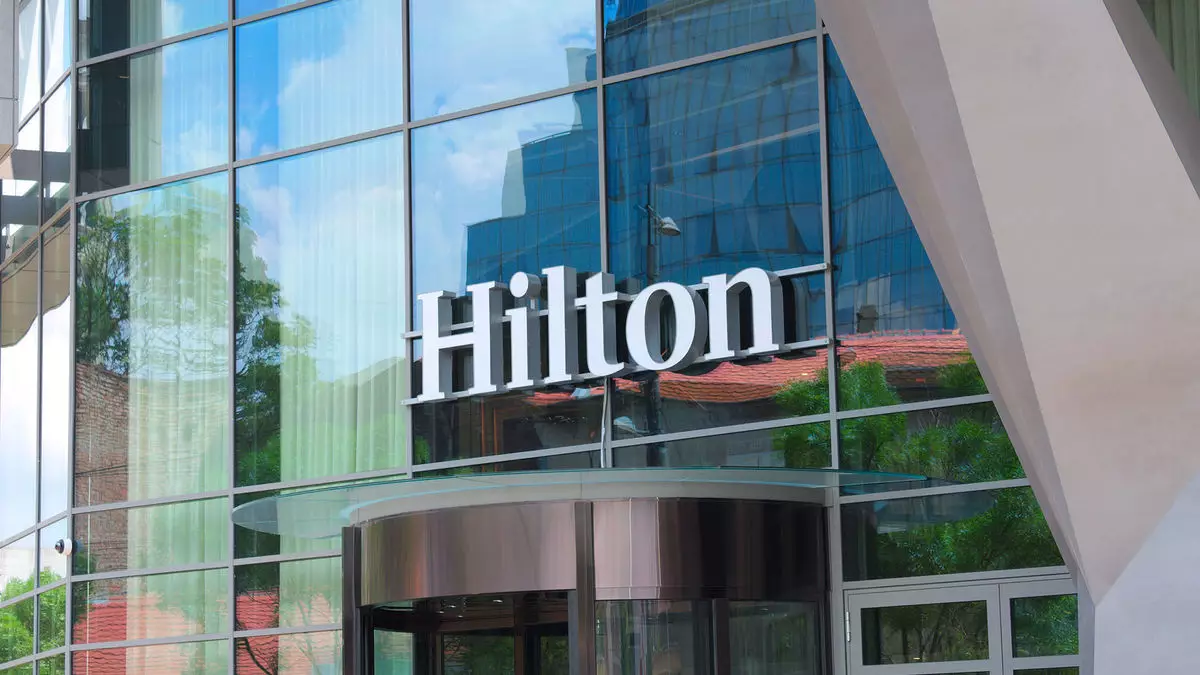As the hospitality industry moves to emerge from the shadows of the pandemic, a complex interplay of factors has begun to shape its recovery. Hilton Hotels, a major player in this space, recently provided insights into the challenges and opportunities within the market during its third-quarter earnings call. CEO Christopher Nassetta’s commentary underscored a mixed picture of growth and adversity, reflecting broader trends affecting not only Hilton but the entire hotel sector.
Despite reporting a year-over-year increase in revenue per available room (RevPAR) of 1.4%, Hilton’s performance fell short of expectations, highlighting vulnerabilities in overall demand. Nassetta pointed to a collection of factors that dampened growth in September, including adverse weather conditions and labor disputes impacting operations. Compounding these challenges is a noted stagnation in leisure travel demand, with insights suggesting a slight decline—an indication that the hospitality market may not be recovering as robustly as some hoped.
Market analysts have responded with a spectrum of interpretations regarding these trends. Some analysts expressed apprehension over a potential decline in consumer spending, while others characterized the fluctuations as transient issues typical of the industry, terming them “ankle-biters.” This term, coined by Baird’s Michael Bellisario, reflects the unpredictable nature of market dynamics that have historically disrupted travel and hospitality without heralding a sustained downturn.
Interestingly, analysts observed that the leisure travel segment is experiencing a normalization that echoes pre-pandemic patterns. This reversion is influenced by a myriad of factors, including the return to school schedules and business travel commitments, which interweave to create a more distinct calendar of travel opportunities.
A notable and troubling aspect of Hilton’s recent challenges revolves around labor actions, particularly extensive strikes orchestrated by the Unite Here union. These strikes have targeted major hotel chains, including Hilton, highlighting the tense relationship between hospitality workers and management. As concerns about labor disputes persist, their ramifications on operations and financial performance merit a closer examination.
Patrick Scholes from Truist Securities pointed out that while Hilton as a global entity might not feel immediate adverse effects, individual properties—especially those heavily reliant on group bookings—are likely to encounter significant disruptions. A case in point is the Hilton Hawaiian Village Waikiki Beach Resort, which has emerged as a pressure point amid ongoing labor actions, suggesting potential financial repercussions for its parent company, Park Hotels & Resorts.
In a revealing statement from Park regarding its third-quarter outcomes, the lack of clarity about the full-year outlook reinforced the uncertainty that labor negotiations bring to the table. Such limitations affect not just the immediate financial expectations but also the broader strategic planning for future growth.
At a broader level, the changing dynamics of consumer behavior are significantly shaping the hospitality landscape. Value-conscious consumers are reevaluating their travel spending; inflationary pressures from rising prices are causing many to reassess their discretionary spending, particularly in lower-end lodging sectors. Jan Freitag from CoStar Group leveraged data to show that the middle and lower tiers of hotel segments are the most vulnerable, as increased price sensitivity has begun to permeate the market.
Furthermore, there’s an observable trend of travelers, particularly those on tighter budgets, gravitating toward more affordable options. With the return to diverse travel choices—ranging from cruises to Airbnb stays—the demand for premium accommodations is experiencing a recalibration. Many consumers no longer feel compelled to pay luxurious prices for beach retreats when ample alternatives exist, prompting industry stakeholders to rethink their pricing strategies.
Despite the challenges, the avenue of group business travel remains a beacon of hope for many hospitality players. In fact, trends reveal an emerging inclination toward smaller, shorter-notice group engagements, reflective of the changing landscape of work environments where flexibility is pivotal.
Similarly, business transient travel is on an upward trajectory, with expectations that this segment may outpace pre-pandemic levels soon. Analysts predict a return to growth that aligns more closely with traditional economic indicators—such as GDP and consumer confidence—that had been disrupted for several years. Such resilience signifies a potential for steadier recovery as the industry adapts to existing challenges while leveraging positive trends.
The road to recovery for the hospitality industry remains fraught with uncertainty, influenced by labor disputes, changing consumer behaviors, and fluctuating demand patterns. However, as the market continues to evolve, so too will the strategies employed by hotel brands to adapt and thrive. Future growth is plausible, with expert predictions suggesting a gradual alignment with historical demand dynamics that underscore the cyclical nature of the hospitality sector. The focus will need to remain on understanding and addressing the multifaceted challenges while embracing new opportunities that arise in an ever-changing landscape.


Leave a Reply